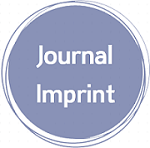The Effect of Therapeutic Low-Frequency Ultrasound applied to Myofascial Trigger Points: A Pilot Pre-Post Design Study
Downloads
Ultrasound at a frequency of 1 or 3 MHz is frequently used to treat various musculoskeletal conditions, but research on ultrasound operating at 38-50 kHz frequencies (US-KHz) is lacking. Study aimed to evaluate the short-term effect of US-KHz on pain pressure threshold (PPT), ankle dorsiflexion range of motion (ROM), and motor performance (the Side Hop Test) in subjects with a myofascial trigger point (TrP) in the calf muscle. US-KHz was applied to the area of the palpable TrP in the calf muscle for 10 minutes (continuous pulse, transducer head size 19.6 cm2, power 0.75-1.25 w/cm2) in twenty volunteers (18-45 years old). Significant improvements (p<0.001) were noted in the Side Hop Test 24 hours after the intervention. ROM improved significantly after 5 minutes with changes maintained 24 hours later. No change was found in the PPT. This pilot study presents preliminary evidence of the efficacy of US-KHz in treating TrPs.
Doi:10.28991/SciMedJ-2021-0303-5
Full Text:PDF
Downloads
Simons, D. G. (1999). Diagnostic Criteria of Myofascial Pain Caused by Trigger Points. Journal of Musculoskeletal Pain, 7(1-2), 111–120. doi:10.1300/j094v07n01_11.
Fernández-de-las-Peñas, C., and Dommerholt, J. (2017). International Consensus on Diagnostic Criteria and Clinical Considerations of Myofascial Trigger Points: A Delphi Study. Pain Medicine, 19(1), 142–150. doi:10.1093/pm/pnx207.
Gerwin, R. D. (2014). Diagnosis of Myofascial Pain Syndrome. Physical Medicine and Rehabilitation Clinics of North America, 25(2), 341–355. doi:10.1016/j.pmr.2014.01.011.
Fricton, J. (2016). Myofascial Pain. Oral and Maxillofacial Surgery Clinics of North America, 28(3), 289–311. doi:10.1016/j.coms.2016.03.010.
Bennett, R. (2007). Myofascial pain syndromes and their evaluation. Best Practice & Research Clinical Rheumatology, 21(3), 427–445. doi:10.1016/j.berh.2007.02.014.
Togha, M., Bahrpeyma, F., Jafari, M., & Nasiri, A. (2020). A sonographic comparison of the effect of dry needling and ischemic compression on the active trigger point of the sternocleidomastoid muscle associated with cervicogenic headache: A randomized trial. Journal of Back and Musculoskeletal Rehabilitation, 33(5), 749–759. doi:10.3233/bmr-171077.
Shah, J. P., Thaker, N., Heimur, J., Aredo, J. V., Sikdar, S., & Gerber, L. (2015). Myofascial Trigger Points Then and Now: A Historical and Scientific Perspective. PM&R, 7(7), 746–761. doi:10.1016/j.pmrj.2015.01.024.
Esenyel, M., Caglar, N., & Aldemir, T. (2000). Treatment of Myofascial Pain. American Journal of Physical Medicine & Rehabilitation, 79(1), 48–52. doi:10.1097/00002060-200001000-00011.
Alvarez, D. J., & Rockwell, P. G. (2002). Trigger points: Diagnosis and Management. American Family Physician, 65(4), 653.
Unalan, H., Majlesi, J., Aydin, F. Y., & Palamar, D. (2011). Comparison of High-Power Pain Threshold Ultrasound Therapy with Local Injection in the Treatment of Active Myofascial Trigger Points of the Upper Trapezius Muscle. Archives of Physical Medicine and Rehabilitation, 92(4), 657–662. doi:10.1016/j.apmr.2010.11.030.
Draper, D. O., Mahaffey, C., Kaiser, D., Eggett, D., & Jarmin, J. (2010). Thermal ultrasound decreases tissue stiffness of trigger points in upper trapezius muscles. Physiotherapy Theory and Practice, 26(3), 167–172. doi:10.3109/09593980903423079.
Saggini, R., Di Stefano, A., Carmignano, S. M., Ancona, E., Di Felice, P. A., & Bellomo, R. G. (2017). The treatment with low frequency acoustic pressure waves (ultrasound diathermy). Therapeutic Considerations and Clinical Reports, 1-6.
Xia, P., Wang, X., Lin, Q., Cheng, K., & Li, X. (2017). Effectiveness of ultrasound therapy for myofascial pain syndrome: a systematic review and meta-analysis. Journal of Pain Research, Volume 10, 545–555. doi:10.2147/jpr.s131482.
Draper, D. O., Castel, J. C., & Castel, D. (1995). Rate of Temperature Increase in Human Muscle During 1 MHz and 3 MHz Continuous Ultrasound. Journal of Orthopaedic & Sports Physical Therapy, 22(4), 142–150. doi:10.2519/jospt.1995.22.4.142.
Watson, T. (2000). The role of electrotherapy in contemporary physiotherapy practice. Manual Therapy, 5(3), 132–141. doi:10.1054/math.2000.0363.
Watson, T. (2002). Ultrasound dose calculations. Touch, 101(1), 14-17.
Feril, Jr., L. B., & Kondo, T. (2004). Biological Effects of Low Intensity Ultrasound: The Mechanism Involved, and its Implications on Therapy and on Biosafety of Ultrasound. Journal of Radiation Research, 45(4), 479–489. doi:10.1269/jrr.45.479.
Bradnock, B., Law, H., & Roscoe, K. (1996). A Quantitative Comparative Assessment of the Immediate Response to High Frequency Ultrasound and Low Frequency Ultrasound (“Longwave Therapy”) in the Treatment of Acute Ankle Sprains. Physiotherapy, 82(2), 78–84. doi:10.1016/s0031-9406(05)66955-6.
Meakins, A., & Watson, T. (2006). Longwave ultrasound and conductive heating increase functional ankle mobility in asymptomatic subjects. Physical Therapy in Sport, 7(2), 74–80. doi:10.1016/j.ptsp.2005.11.006.
Hoch, M. C., Staton, G. S., Medina McKeon, J. M., Mattacola, C. G., & McKeon, P. O. (2012). Dorsiflexion and dynamic postural control deficits are present in those with chronic ankle instability. Journal of Science and Medicine in Sport, 15(6), 574–579. doi:10.1016/j.jsams.2012.02.009.
Hoch, M. C., & McKeon, P. O. (2010). The Effectiveness of Mobilization with Movement at Improving Dorsiflexion after Ankle Sprain. Journal of Sport Rehabilitation, 19(2), 226–232. doi:10.1123/jsr.19.2.226.
Hall, E. A., & Docherty, C. L. (2017). Validity of clinical outcome measures to evaluate ankle range of motion during the weight-bearing lunge test. Journal of Science and Medicine in Sport, 20(7), 618–621. doi:10.1016/j.jsams.2016.11.001.
Bennell, K., Talbot, R., Wajswelner, H., Techovanich, W., Kelly, D., & Hall, A. (1998). Intra-rater and inter-rater reliability of a weight-bearing lunge measure of ankle dorsiflexion. Australian Journal of Physiotherapy, 44(3), 175–180. doi:10.1016/s0004-9514(14)60377-9.
Chisholm, M. D., Birmingham, T. B., Brown, J., MacDermid, J., & Chesworth, B. M. (2012). Reliability and Validity of a Weight-Bearing Measure of Ankle Dorsiflexion Range of Motion. Physiotherapy Canada, 64(4), 347–355. doi:10.3138/ptc.2011-41.
Farrell, M., & Richards, J. G. (1986). Analysis of the reliability and validity of the kinetic communicator exercise device. Medicine & Science in Sports & Exercise, 18(1), 44-49. doi:10.1249/00005768-198602000-00009.
östenberg, A., Roos, E., Ekdah, C., & Roos, H. (1998). Isokinetic knee extensor strength and functional performance in healthy female soccer players. Scandinavian Journal of Medicine & Science in Sports, 8(5), 257–264. doi:10.1111/j.1600-0838.1998.tb00480.x.
Augustsson, J., & Thomee, R. (2000). Ability of closed and open kinetic chain tests of muscular strength to assess functional performance. Scandinavian Journal of Medicine and Science in Sports, 10(3), 164–168. doi:10.1034/j.1600-0838.2000.010003164.x.
American College of Sports Medicine. (2002). Kraemer WJ, Writing Group Chairman. Position Stand: Progression models in resistance training for healthy adults. Med Sci Sports Exerc, 34, 364-80. doi: 10.1097/00005768-200202000-00027.
Hewett, T. E., Stroupe, A. L., Nance, T. A., & Noyes, F. R. (1996). Plyometric training in female athletes: decreased impact forces and increased hamstring torques. The American journal of sports medicine, 24(6), 765-773. doi: 10.1177/036354659602400611.
Paterno, M. V., Schmitt, L. C., Ford, K. R., Rauh, M. J., Myer, G. D., Huang, B., & Hewett, T. E. (2010). Biomechanical Measures during Landing and Postural Stability Predict Second Anterior Cruciate Ligament Injury after Anterior Cruciate Ligament Reconstruction and Return to Sport. The American Journal of Sports Medicine, 38(10), 1968–1978. doi:10.1177/0363546510376053.
Gustavsson, A., Neeter, C., Thomeé, P., Grävare Silbernagel, K., Augustsson, J., Thomeé, R., & Karlsson, J. (2006). A test battery for evaluating hop performance in patients with an ACL injury and patients who have undergone ACL reconstruction. Knee Surgery, Sports Traumatology, Arthroscopy, 14(8), 778–788. doi:10.1007/s00167-006-0045-6.
Andrade, M.S., M. Cohen, I.C. Piçarro, and A.C. Silva. “Knee Performance after Anterior Cruciate Ligament Reconstruction.” Isokinetics and Exercise Science 10, no. 2 (August 19, 2002): 81–86. doi:10.3233/ies-2002-0088.
Docherty, C., Arnold, B. L., Gansneder, B. M., Hurwitz, S. R., & Gieck, J. H. (2004). Individuals with Functional Ankle Instability have Contralateral Lowload Force Sense Deficits but not Joint Reposition Sense Deficits. Medicine & Science in Sports & Exercise, 36(Supplement), S187. doi:10.1249/00005768-200405001-00896.
Fischer, A. A. (1987). Pressure algometry over normal muscles. Standard values, validity and reproducibility of pressure threshold. Pain, 30(1), 115–126. doi:10.1016/0304-3959(87)90089-3.
Chesterton, L. S., Sim, J., Wright, C. C., & Foster, N. E. (2007). Interrater Reliability of Algometry in Measuring Pressure Pain Thresholds in Healthy Humans, Using Multiple Raters. The Clinical Journal of Pain, 23(9), 760–766. doi:10.1097/ajp.0b013e318154b6ae.
Kamonseki, D. H., Cedin, L., Tavares-Preto, J., & Calixtre, L. B. (2018). Reliability, validity, and minimal detectable change of Side Hop Test in male children and adolescents. Physical Therapy in Sport, 34, 141–147. doi:10.1016/j.ptsp.2018.09.009.
Basso, O., & Pike, J. M. (1998). The Effect of Low Frequency, Long-Wave Ultrasound Therapy on Joint Mobility and Rehabilitation after Wrist Fracture. Journal of Hand Surgery, 23(1), 136–139. doi:10.1016/s0266-7681(98)80248-9.
Ward, A. R., & Robertson, V. J. (1996). Comparison of Heating of Nonliving Soft Tissue produced by 45 kHz and 1 MHz Frequency Ultrasound Machines. Journal of Orthopaedic & Sports Physical Therapy, 23(4), 258–266. doi:10.2519/jospt.1996.23.4.258.
Nakano, J., Yamabayashi, C., Scott, A., & Reid, W. D. (2012). The effect of heat applied with stretch to increase range of motion: A systematic review. Physical Therapy in Sport, 13(3), 180–188. doi:10.1016/j.ptsp.2011.11.003.
Aguilera, F. J. M., Martín, D. P., Masanet, R. A., Botella, A. C., Soler, L. B., & Morell, F. B. (2009). Immediate Effect of Ultrasound and Ischemic Compression Techniques for the Treatment of Trapezius Latent Myofascial Trigger Points in Healthy Subjects: A Randomized Controlled Study. Journal of Manipulative and Physiological Therapeutics, 32(7), 515–520. doi:10.1016/j.jmpt.2009.08.001.
Sarrafzadeh, J., Ahmadi, A., & Yassin, M. (2012). The Effects of Pressure Release, Phonophoresis of Hydrocortisone, and Ultrasound on Upper Trapezius Latent Myofascial Trigger Point. Archives of Physical Medicine and Rehabilitation, 93(1), 72–77. doi:10.1016/j.apmr.2011.08.001.
Srbely, J. Z., Dickey, J. P., Lowerison, M., Edwards, M. A., Nolet, P. S., & Wong, L. L. (2008). Stimulation of myofascial trigger points with ultrasound induces segmental antinociceptive effects: A randomized controlled study. Pain, 139(2), 260–266. doi:10.1016/j.pain.2008.04.009.
- This work (including HTML and PDF Files) is licensed under a Creative Commons Attribution 4.0 International License.












